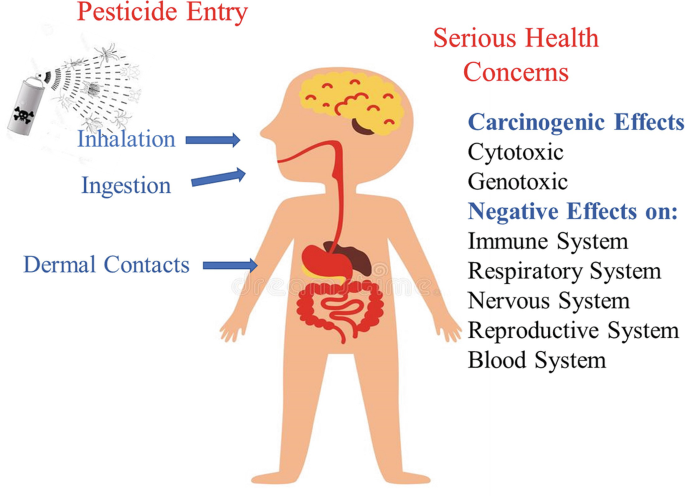Eco Bed Bug Exterminators Dc - An Overview
Table of ContentsEco Bed Bug Exterminators Dc Fundamentals ExplainedThe smart Trick of Eco Bed Bug Exterminators Dc That Nobody is Talking AboutThe 30-Second Trick For Eco Bed Bug Exterminators DcThe Single Strategy To Use For Eco Bed Bug Exterminators DcThe 3-Minute Rule for Eco Bed Bug Exterminators Dc
Due to the fact that chemicals are hazardous, they are also possibly unsafe to people, pets, various other microorganisms, and the environment. As a result, people who use chemicals or on a regular basis come in contact with them have to comprehend the loved one poisoning, possible health results, and preventative procedures to decrease direct exposure to the items they make use of. Danger, or danger, of using pesticides is the potential for injury, or the degree of threat entailed in making use of a pesticide under a given collection of conditions.
However, applicators can reduce or virtually remove direct exposure-- and hence lower danger-- by complying with the tag instructions, using individual safety clothing and devices (PPE), and handling the pesticide appropriately. Even more than 95 percent of all chemical direct exposures come from facial direct exposure, primarily to the hands and forearms. By using a pair of unlined, chemical-resistant handwear covers, this sort of direct exposure can be virtually eliminated.
The harmful effects that happen from a single exposure by any kind of route of entry are termed "intense effects." The 4 paths of direct exposure are facial (skin), breathing (lungs), oral (mouth), and the eyes. Intense poisoning is determined by checking out the facial toxicity, breathing poisoning, and dental poisoning of examination pets.
Our Eco Bed Bug Exterminators Dc PDFs
Acute poisoning is gauged as the quantity or focus of a toxicant-- the a.i.-- required to eliminate 50 percent of the pets in an examination population. This step is usually revealed as the LD50 (deadly dose 50) or the LC50 (dangerous concentration 50). Additionally, the LD50 and LC50 values are based on a solitary dose and are recorded in milligrams of pesticide per kilo of body weight (mg/kg) of the guinea pig or partially per million (ppm).
The reduced the LD50 or LC50 value of a chemical product, the higher its poisoning to human beings and animals. Pesticides with a high LD50 are the least harmful to people if made use of according to the directions on the item label. The persistent poisoning of a pesticide is figured out by subjecting guinea pig to long-lasting direct exposure to the energetic component.
The persistent toxicity of a pesticide is a lot more hard than severe poisoning to determine via lab evaluation. Products are categorized on the basis of their family member intense toxicity (their LD50 or LC50 values). Pesticides that are identified as very poisonous (Poisoning Group I) on the basis of either dental, dermal, or breathing toxicity must have the signal words DANGER and poisonous substance published in red with a head and crossbones symbol prominently presented on the front panel of the bundle label.
The acute (solitary dose) oral LD50 for pesticide items in this group ranges from a trace amount to 50 mg/kg. As an example, direct exposure of a few decreases of a material taken orally might be fatal to a 150-pound person. Some pesticide items have just the signal word DANGER, which tells you nothing concerning the intense toxicity, just that the item can cause severe eye damage or serious skin irritation
The 7-Minute Rule for Eco Bed Bug Exterminators Dc
In this category, the intense dental LD50 varieties from 50 to 500 mg/kg. A tsp to an ounce of this product can be fatal to a 150-pound individual (pest control Washington DC). Chemical items categorized as either slightly hazardous or relatively nontoxic (Toxicity Categories III and IV) are called for to have the signal word CAUTION on the pesticide tag

What Does Eco Bed Bug Exterminators Dc Do?
All pesticide toxicity valuesPoisoning worths the Consisting of, can be found on located product's Item Safety Product Safety and security (MSDS). Chemical tags and MSDS can be obtained from retailers or produces. Additionally, many items additionally have info that can be found on the Net. The signs and symptoms of chemical poisoning can vary from a moderate skin irritability to coma or also death.
Because of potential health and wellness issues, chemical individuals and trainers image source need to acknowledge the usual signs and symptoms of pesticide poisoning. The impacts, or signs and symptoms, of chemical poisoning can be broadly defined as either topical or systemic.
Eco Bed Bug Exterminators Dc Can Be Fun For Everyone
Dermatitis, or swelling of the skin, is accepted as the most typically reported topical result connected with pesticide direct exposure. Some individuals often tend to cough, wheeze, or sneeze when revealed to pesticide sprays.
This symptom normally subsides within a couple of minutes after a person is eliminated from the direct exposure to the toxic irritant. Nevertheless, a reaction to a chemical product that creates a person not only to sneeze and cough but likewise to establish serious intense respiratory signs is most likely to be a true hypersensitivity or allergic reaction.
Systemic impacts are quite various from topical effects. They frequently occur far from the initial point of call as an outcome of the chemical being soaked up into and dispersed throughout the body. Systemic impacts usually consist of nausea or vomiting, throwing up, exhaustion, headache, and digestive tract problems. In advanced poisoning instances, the individual may experience modifications in heart rate, trouble breathing, convulsions, and coma, which might cause death.